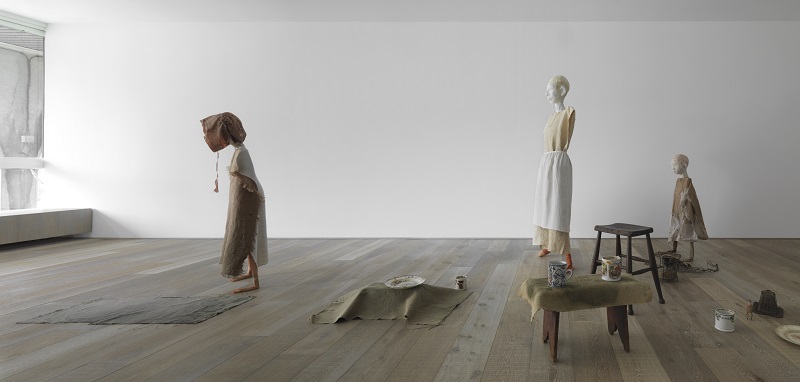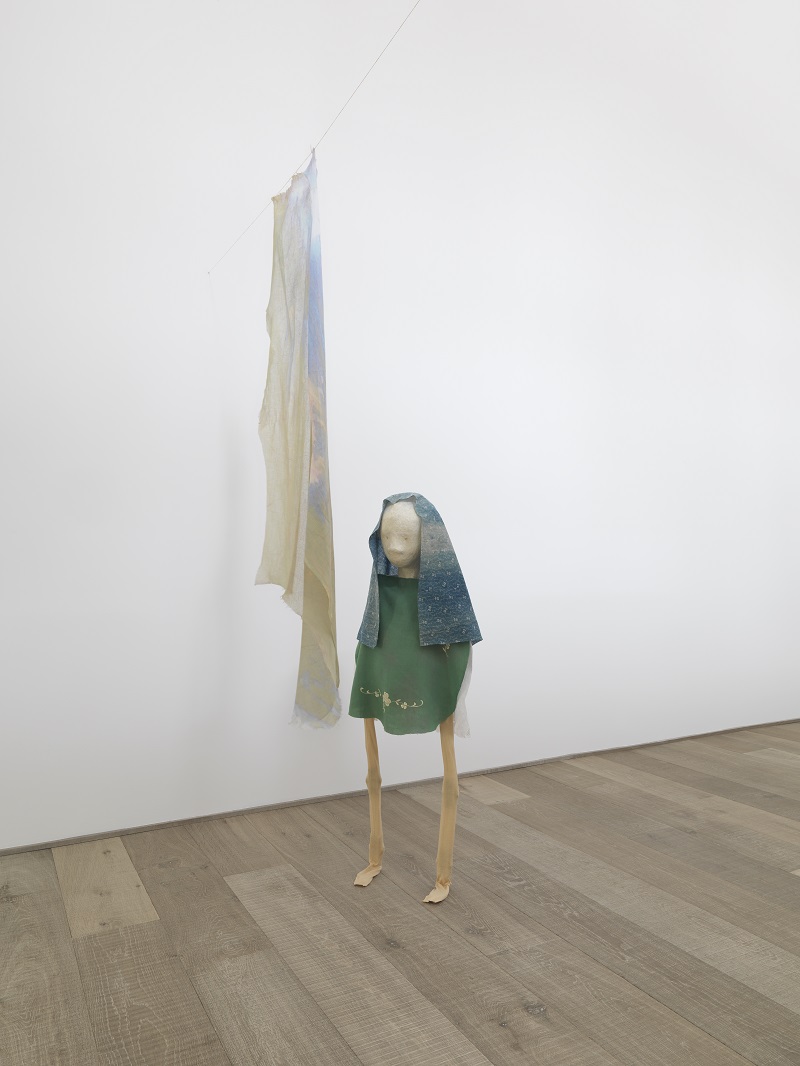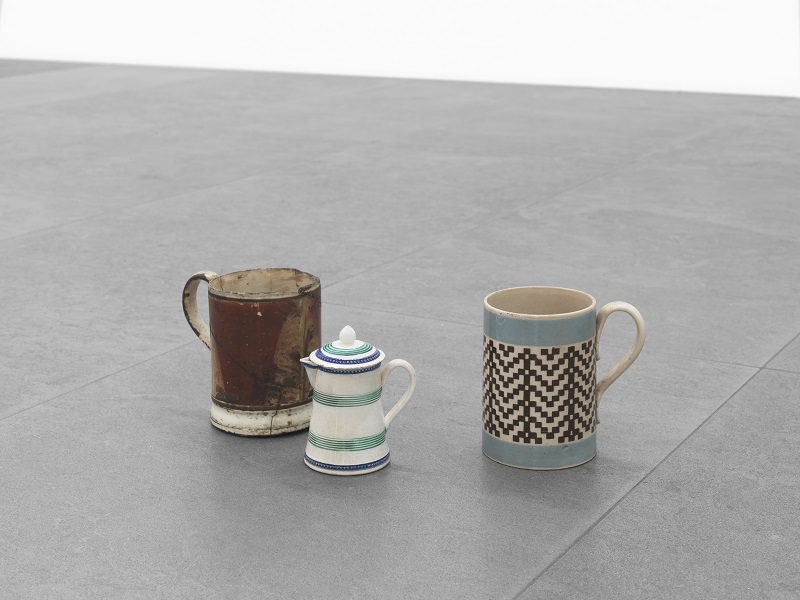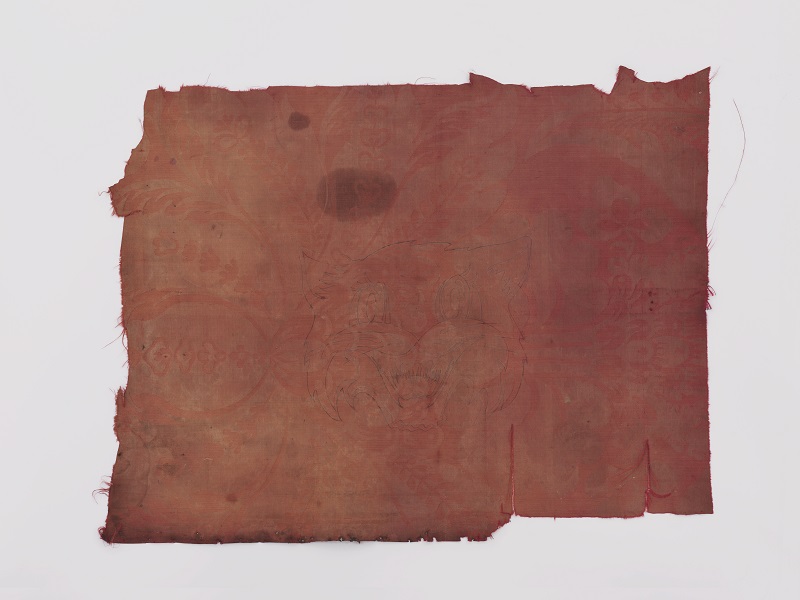Article by Louisa Stark // Apr. 19, 2018
This article is part of our artist Spotlight Series.
Assemblage is Cathy Wilkes’s medium of choice. She creates installations that show scenes from everyday life, using a combination of self-made sculptures and found objects. Based in Glasgow, the Belfast-born artist draws upon her own surroundings as a source of inspiration and consequently her work has a tone of gritty social realism, yet also manages to feel surreal or even magical.

Cathy Wilkes: ‘Untitled (Biggar)’, 2013, Installation view // Photo by Allard Bovenberg, Amsterdam, Courtesy of the artist and Xavier Hufkens, Brussels
This is true of her 2013 work ‘Untitled (Possil, at last)’ – an installation based on a defunct pottery manufacturing site in the Possil district of Glasgow, and the social implications of its closure. A group of childlike sculptures are placed on a debris-littered floor around the central figure of an inebriated man. Their clothing is old-fashioned, and their positioning has connotations of a séance; this simultaneously conjures the past narratives and present realities of a specific place and relocates them to a gallery space.

Cathy Wilkes: ‘Untitled’, 2013, string, hanging fabric with ink, figure (metal armature, paper maché, paint, fabric, hat, wool stuffing), Dimensions variable // Photo by Allard Bovenberg, Amsterdam, Courtesy of the artist and Xavier Hufkens, Brussels
In the decade since her installation ‘I Give You All My Money’ was nominated for the 2008 Turner Prize, key themes of care and empathy, which were represented there by the mannequin of a nurse, still endure throughout Wilkes’ practice. Figures of women and children recur in the form of shrouded shop mannequins, papier-mâché models or soft material dolls similar to Louise Bourgeois’s fabric sculptures. These are used to show lived, familial experiences but are prevented from becoming sentimental by either the banality or precarity of their contexts. In terms of installation, Wilkes also creates a sense of fragility; her unconventional placement of breakable objects directly on the gallery floor, without plinths or barriers, dissolves the boundaries between viewer and work and makes her installations themselves feel vulnerable.

Cathy Wilkes: ‘Untitled’, 2017, 2 cups, 1 jug, 20 x 42 x 12 cm // Photo by Allard Bovenberg, Amsterdam, Courtesy of the artist and Xavier Hufkens, Brussels
The installations often reconfigure old pieces of work within new contexts—as in her 2017 retrospective at MoMA—and this process of re-use is reflected in Wilkes’ second-hand aesthetic. The found objects that she collages with the figures, such as crockery and furniture, are taken from domestic environments and so already imbued with a history of their own. They are arranged very deliberately by Wilkes to induce a transcendental experience in the viewer, while also appearing to be on the cusp of decaying and transitioning into a different kind of matter themselves. The colour-field paintings that Wilkes makes on used bed-linen, and sometimes displays alongside her installations, also blur the distinctions between traces of ‘real’ lived experience and artificial traces left by the artist.

Cathy Wilkes: ‘Untitled’, 2016, red tapestry fabric, 45 x 55 cm // Photo by Allard Bovenberg, Amsterdam, Courtesy of the artist and Xavier Hufkens, Brussels
To help the viewer to understand her practice Wilkes has cited Nietzsche’s ‘Midday’—a time when the “sun casts no shadow and things cast shadows only upon themselves.” She sees her work as the image of objects and scenes, split-off and separate from their reality; in her installations the anaemic coloring of fabric and inclusion of empty vessels with dregs still lining them are the shadows of day to day experience.


























